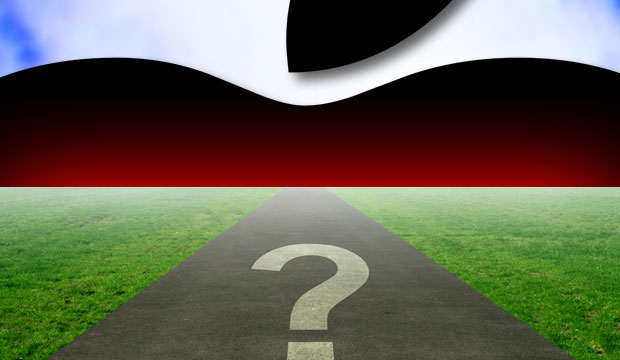Apple last week reported earnings, and with the exception of a strong showing from the iPad Pro, the key financial metrics were all down — and for the third quarter running. So what’s wrong with Apple?
The company had been growing alarmingly well until last year, but growth suddenly has become elusive. It isn’t going out of business, but it also isn’t the performance king anymore. I’ll share some thoughts on what happened to Apple and how to fix it — if it can be fixed.
I’ll close with another amazing laptop — the Lenovo X1 Yoga with an OLED screen — as my product of the week.
What Made Apple Different Under Jobs?
The changes in Apple really come down to a unique difference in Steve Jobs that stands out today in contrast with most every other CEO. Jobs inherently knew that the truth really didn’t matter — that perception ruled. He also knew that it was far cheaper to drive people to products than shotgun them out if you had mad product sniper skills, and Jobs did.
What I mean is that virtually every one of Apple’s competitors executes a strategy of creating broad lines of products that bracket a market and meet the assumed diverse needs of the buyers. Apple, under Jobs, built far fewer products but spent far more on demand-generation efforts — ads — to convince buyers that what Apple sold was ideal.
That led Apple not only to better profits, but also to higher customer satisfaction, because there was far less chance someone would choose wrong, and problems tended to be far easier to fix.
Market Maker
The end result was that Apple under Jobs was a market maker. When it came out with the iPod, it recreated the market that had been owned by the Sony Walkman, and folks ineffectively tried to copy it.
Then, with the iPhone, Apple redefined the market as consumer-focused and smartphone-centric, whereas smartphones previously had been largely business-focused.
The iPad took a segment that had been anything but exciting and turned it, for a short time, into a vibrant market.
With the iPod, there was no Google, and Apple largely remained unchallenged in the space until it shifted the market to the iPhone. With the iPhone began the competition with Google — and Google created lower-cost knockoff products and didn’t spend much on demand generation, so it largely fed off Apple’s efforts.
That put downward pressure on margins, and once Steve Jobs was gone, Tim Cook cut marketing (and lost a lot of marketing skill). Without another market maker, every segment that Apple was in started to slow or slip into decline.
Apple largely carried the markets for MP3 players, smartphones and tablets. When it cut back, everything slid — including competing product sales.
Failure to Understand Marketing
Observing Apple’s path is both fascinating and frustrating for me, because the connection between demand-generation efforts and sales seems, to me, very obvious. When Samsung spent massively on its phones, it took share from Apple at an alarming rate. When Microsoft massively spent on its Surface products, suddenly it began to lead the 2-in-1 product segment, and the Surface became the new product to have and show off.
Yet when entire markets — like the iPad tablet market — fall off because no one is doing demand generation anymore, the conclusion seems to be that “no one wants tablets” rather than “you need to do more demand generation to get sales up.”
The Apple Watch
The Apple Watch showcases why the new Apple can’t perform like the old one. Recall the iPod, which initially put Apple on top. It was simple, it had an iconic name, it worked with non-Apple PCs (eventually), and it was focused.
The Apple Watch is arguably the best general-purpose smartwatch in the market. However, it is so complex that it’s daunting to learn, it doesn’t have an iconic name, it works only with iPhones, and it isn’t focused.
The iPhone
Apple currently lives or dies on the iPhone, as it dominates its revenue and profit. This lack of diversification around a market it has limited control over, due to heavy regulation and carrier dominance, significantly hampers Apple’s ability to ensure growth in the segment.
As a result, it has been more focused on cutting costs than in extending the product, of late. At some point, it may cut too much for buyers of this premium product, and they could abandon the offering in numbers that could turn Apple into the next Palm.
A lot depends on the iPhone 7 this year. If buyers get the sense that it is overpriced junk because Apple cut too much out of it, the firm will drop into crisis.
If the iPhone 7 is cut too deeply, Samsung and others will step up and point it out.
Apple Isn’t Apple Anymore
By the way, the changes in Apple don’t mean Tim Cook is a failure. One of the paths to success for a new CEO is to transform a company in order to run it effectively. That’s what Cook — an operations guy, not a marketing guy — apparently has been doing. Apple doesn’t have the excitement or the extreme performance it had under Jobs, but let’s be clear — neither did any other company. With Cook, Apple gets relatively solid execution.
The problem right now is that Apple is still mid-conversion. It doesn’t have the product breadth of a typical tech company — yet it is increasingly cutting costs and marketing like one. To pull out, Cook either has to complete the transition from Jobs’ Apple to Cook’s Apple and deliver far more products across a broader area (the Apple car could be a case in point) or find someone who once again can create enough excitement in Apple products to drive users to them exclusively.
Another possible fix would be to reduce Alphabet’s (Google’s) ability to undercut Apple’s prices — but with the exception of some rather powerful European Union efforts, there hasn’t been much progress in that direction of late.
Wrapping Up
Apple still performs better than the vast majority of firms in the world in terms of gross and net income. However, the trend is in the wrong direction, largely because Apple hasn’t converted fully to a model that matches Tim Cook’s skill set more closely: more products, less marketing.
Apple over time will become more and more like other consumer companies — like Sony and Samsung, for example — and the jury is still out on whether that will ensure Apple’s long-term survival and success.
We are seeing a lot of rethought companies this year, and Apple is only one of them — but it’s the one that had to deal with the mortality of its marketing-focused founder.
If I said I wasn’t excited to unpack the Lenovo X1 Yoga OLED laptop I received last week, I’d be lying. I’ve been looking forward to it for most of this year.
This is the first laptop I’ve had with an OLED screen, which means colors that jump out at you — pictures and movies that are so colorful they make other screens look dull by comparison.

This is another “if money were no object” configuration, though, as the one the company sent me is fully loaded with an Intel I7, 16 GB of memory, and a 500-GB SSD drive.
As with all laptops in this class, this one is very thin. When you go thin with this kind of power, you typically have to live with some fan noise and reduction in ports. While the X1 has a little fan noise, it avoids taking that port hit. It has a decent set of ports, including three USB 3.0 ports, an HDMI port, a OneLink+ port (for full dock), an SD card slot, and a mini-display port.
It has the traditional Yoga flip screen tablet conversion capability, which means you could use this as a tablet but likely won’t. It would be great for movies on a plane, though, or presentations from the OLED screen.
Battery life is reported at up to 9 hours, so you should get at least 5-6 hours, but it is the OLED display that really makes this this configuration shine. [*Correction – Aug. 2, 2016]
OLED displays can be found on some of the high-end smartphones, but they remain very rare on laptops right now. This one is just stunning, and there is no way to convey how good this looks on anything that doesn’t have an OLED display.
Having decent performance and a breakout display doesn’t come cheap — you are likely talking close to $3K for this configuration if you can get it (the OLED panels are very hard to come by).
This has one of the new touch fingerprint readers as well (similar to an iPhone experience), making logging in with Windows Hello a breeze.
The Lenovo X1 Yoga represents the strongest nongaming business-focused technology showcase product currently in market, and it is both an impressive product and my product of the week.
*ECT News Network editor’s note – Aug. 2, 2016: In our original published version of this column, Enderle said that battery life was reported at up to 11 hours, so you should get at least 8. However, Lenovo apparently erred in stating the review unit’s specs. The OLED version provides only 9 hours of battery life, not 11, Enderle said.
























































